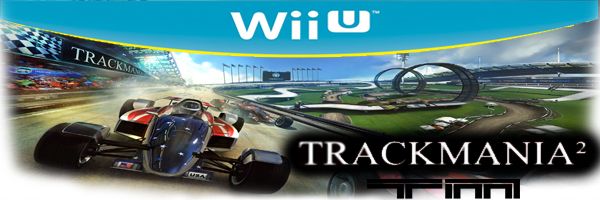------------------------------------------------------------------------------------------------------------------------------------------------------------------------------------------------------------
GRID 2: We've played it. We're calling it - Racing Games will never be the same again.
"The most important racer of this generation". That's what we called the original GRID recently. Can you imagine how good a game could be if the team that created it was given four whole years to make a sequel? No pressure, no deadlines… just developing a game in tandem with the technology that was already incredible near the start of this console generation. Can you imagine that? Well, there's no need. This is it. Look:
It's true, GRID 2 is real. We've played it. We've crashed over the Armco of the Californian coastline and into the blue sky beyond. And we're here to tell you everything we can because we'reridiculously excited about it. This has the potential to be the best racing game of the generation. Perhaps ever.

Above: GRID 2, baby! Even after hitting one of those trees. GRID 2, baby!
Codemasters has finally concurred with what we've been saying for years. "While most devs seem to think 'more content = better game', the opposite is often true." As a result, they say they are 'not playing the numbers game'. Everything that's been included is there because the team deems it worthy. There's no fluff or Premium/Standard divide. It's top quality or nothing at all.
The aim is 'Total Race Day Immersion'. To create a racing game that gives you heart-pounding action every second of the way. We're not talking about artificial, scripted events or cheap camera-shaking effects to give an impression of speed. We're talking about the roar of the crowd, the smoke from screaming tyres. Rivalries that develop organically between you and the other drivers depending on how much or how little respect you show them. This is all about the race. The glory, the spectacle and the danger.
Assistance is useless
That danger is made all the more real when you hear the games first major revelation: There are no driver assists. Automatic gears, yes, but no 'dynamic suggested line' crap, no traction control and most certainly not a hint of 'auto-brake'. Why bother having these safety nets when you can get the basic handling right so anyone can play it? Instead, the cars have been finely tuned to be playable with either a wheel or a pad (the latter of which is still 85% of gamers' control choice, we're told) and you should be able to feel how the car is behaving.

Above: You may wish to apply the brakes at this speed. Need anything else?
It works, too. Playing the Californian coastline route on a massive projector screen at Codemasters' HQ (pictured below), less daring players take things slowly. They squeeze the brakes for the corners, turn in smoothly – they drive the car like it's a Sunday afternoon leisure activity. And the car purrs as they do so. But, when pushed (by us, of course), the physics engine shines, allowing for long, controlled slides in which you teeter on the edge of control. Yet one snatched correction can all go suddenly wrong, which is how we ended up careening over the cliff.

Above: This is known as the D-Box - it's as brilliant and expensive as it looks
You're probably wondering by now why we keep saying 'Californian coast'. Fans will know that's not traditional GRID territory and sounds more like something you'd find in Need for Speed, or even OutRun. Well, it's down to GRID 2's new focus on three main driving types: Street Racing, Road Racing and Track Racing.
The California demo we played is Road Racing – a sprint from point to point, cannoning along the cliffside road before hurtling through painfully-solid trees and dappled sunlight. It definitely isn't like anything in GRID 1, but is pleasantly different from DiRT's point-to-point events too.
Everything GRID stands for is still here in spades. We can't emphasise enough the feeling of scale as you exit the second corner, staring down a slight decline to a left-hander with the full vastness of the Pacific Ocean beyond. On a 2D projection display, we're getting vertigo.

Above: That open space off to the left there is literally a 100ft drop to the ocean
The second demo we played takes place on the streets of Chicago - and it's much more like the GRID we recognise, just so much slicker. We've never seen shiner bodywork and glass effects, and that's including Gran Turismo 5's photo mode. The word here is 'hyper-realism'. It's ludicrously detailed and grounded in the real world, yet it's clearly a super-charged version of reality. Shafts of light through iron girders, a beautiful hazy distance effect on the tops of the skyscrapers... it's like a playable, CG render of concept art and exactly what arcade games would look like now if arcades had continued from their '90s heyday.

Above: Racing under light shafts like that is classic GRID. And now we want another go
Say goodbye to driver's eye
However, we mustn't allow the spectacle to gloss over the first big omission from the game: There's no helmet cam (Insert dramatic chipmunk here in your mind). Now, chances are you don't care. It's said that 95% of GRID players use bonnet or chase cam. But we care. The reason for its absence is simple – the exquisitely detailed interior shots used too much processing power to justify including them when nobody was using them, and the team would rather use that power elsewhere on the things that people are looking at. Fair enough, but we're still sad to see it go. So are the developers - they said so.
The other big omission is Destruction Derby mode. Yes, it was great fun in GRID, but you can play DiRT Showdown for that now. 'But it's not the same!' you're probably thinking and you're right. We'll miss it too. But the argument from the team is that all the destruction and close racing is present in the street racing anyway. And one of the few criticisms we have of the first game is that some of the modes were under-developed, destruction derby included. But that's not going to happen here – everything that's in is going to be done properly.
The street racing demo is very much like GRID's San Francisco events, actually. The racing is close and hard-fought, the constant rubbing with opponents yields bits of broken bodywork which can get stuck under your car, making one heck of a noise as they rattle underneath the car's chassis and having a noticeable effect on handling. Damage will affect handling in the final game, but for our demo that was turned off – the team didn't want people breaking their cars and then complaining the game's handling is off.

Above: We played the PC version, but it's been built for current-gen consoles
We asked the team about the damage system and it's another leap forward in terms of tech. Nothing is scripted, but each one of some 30 different impact zones have realistic behaviours ready to play out in an accident. Metal will bend according to real-life crash test data and every part of the car that falls off will remain in the game world as a physics object. The game stops short of deforming the cockpit, so you can't squish your driver into strawberry jam, but it does have more animation points in the damage so it will look even smoother when you watch it at super-low replay speeds.
Massaging the EGO
The EGO engine has been developed throughout the process of making this game, and it shows. Perhaps the most noticeable overall benefit is that GRID 2's physics engine runs at 1,000 samples a second, which is twice as many as is closest rivals, Forza and GT. It makes for a very smooth ride. And it seems they can play the numbers game when they want to.

Above: Those wheels' physics are calculated 1,000 times a second
But that's not impressive enough for GRID 2. It does all of this while modelling and warping the tread of the tyre in 3D, morphing the rubber according to the forces placed on it and calculating the grip of the tread that's touching the tarmac as a result. To be scientific, that's just mental.
Continental circus
Online, Codemasters Racenet will be integrated into the game, giving a greater sense of community to the proceedings. The online mode will be separate from the single-player's XP level, meaning your online career is whatever you want to make it. The idea is that you'll tell your own story – and be able to set up your own goals and smash them if you so wish (which sounds a lot like Metropolis Street Racer's 'Kudos' system - no bad thing). You can set up your own event type, choosing everything, or just jump into a quick race.
You'll be given some Tier 1 cars to choose from at the start to get you going. There are four tiers, with cars ranging from a Ford Mustang Mach 1 – the first car in the game – through to a Pagani Huayra and Koenigsegg Agera R at tier 4. If you don't know what those last two are, they're the very latest supercars – the former being Pagani's second ever car after their world-famous Zonda. Suffice to say they all look as enticing as a cool beer on a hot day. Or lemonade, depending how old you are.

Above: Who wouldn't want the chance to drive one of these beauties at speed?
After the issues that the first game reportedly had with the Ferrari license (which the team don't wish to discuss), we couldn't quite get a confirmation that Ferrari will be appearing in this sequel. But with F1's licensing going so well, it wouldn't surprise us at all if Ferraris did appear in the game.
Another area the developers wouldn't be drawn on was the potential for wet-weather racing. It was conspicuously absent in GRID, but then as the team point out, nobody really missed it. We suggest perhaps the F1 games' weather tech could be borrowed, which they countered by saying 'well, we never borrow tech without adding something to it ourselves'. So... we're expecting rain effects, only better. Perhaps with accurately forming rainbows in the spray?

Above: Fat tyres, close racing and up to 40,000 spectators per track. We like this
We had been a touch concerned at Codemasters' decision to go down a 'racing games only' route. F1's been consistently great, but with review scores for DiRT arcing slightly downwards in tandem with the increased frequency of releases, we were wondering whether quality was suffering at the expense of prolific output. But now we've played GRID 2, we understand.
The past four years have been spent creating that is already very special. If DiRT Showdown was throwaway popcorn gaming, this is the crème de la crème of a cordon bleu speciality. The game's not coming out this year (it's down for 2013) but it is coming to current gen machines. The timing has been chosen deliberately - the team is getting end-of-generation performance from both consoles. And who knows, perhaps the maxxed-out PC version is going to be a launch game for next-gen?
Even if it's not, it doesn't matter. If you have any interest in racing games, get excited right now. This is going to be a very big deal.
------------------------------------------------------------------------------------------------------------------------------------------------------------------------------------------------------------
The only thing I'm upset about is No Driver's Eye (cockpit view). What do you guys think?
Edited by Cerberuz, 08 August 2012 - 06:10 AM.
























